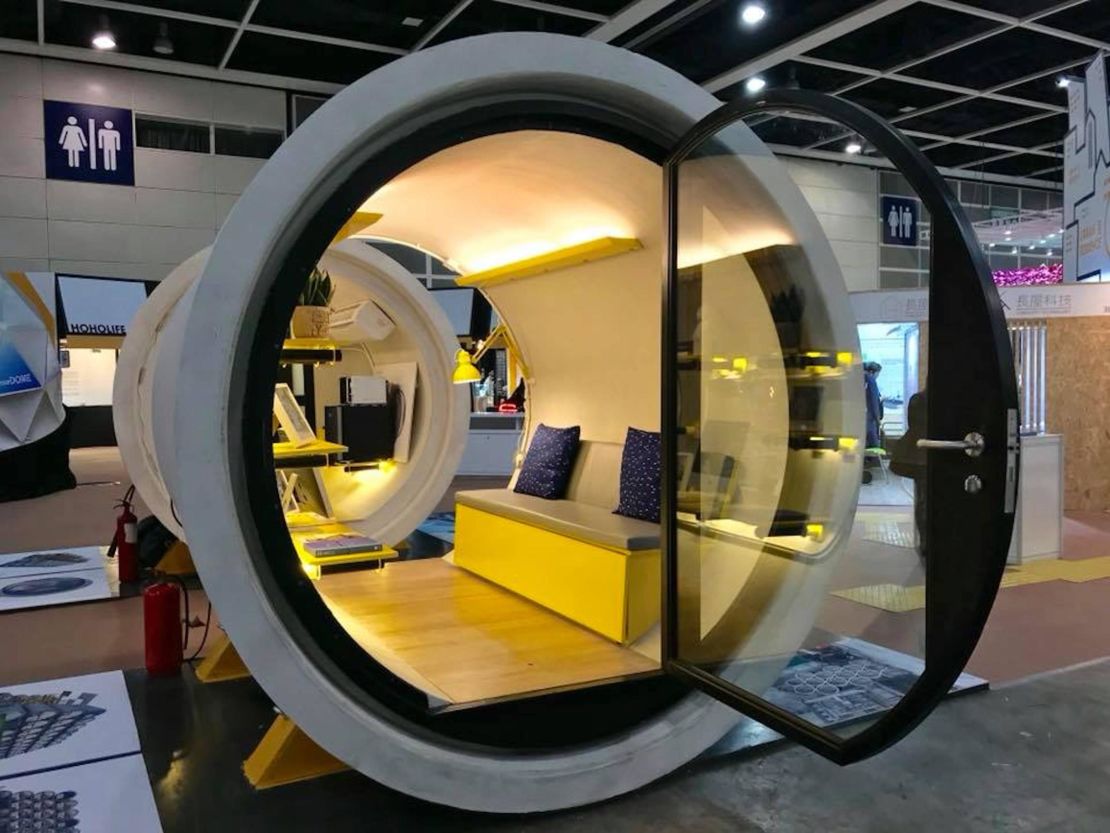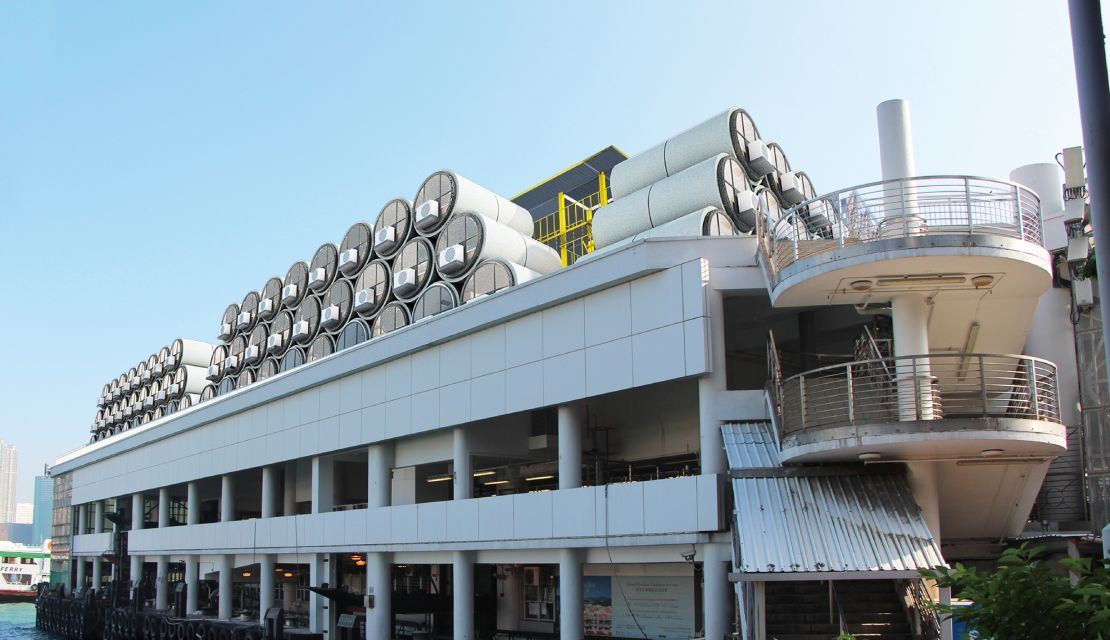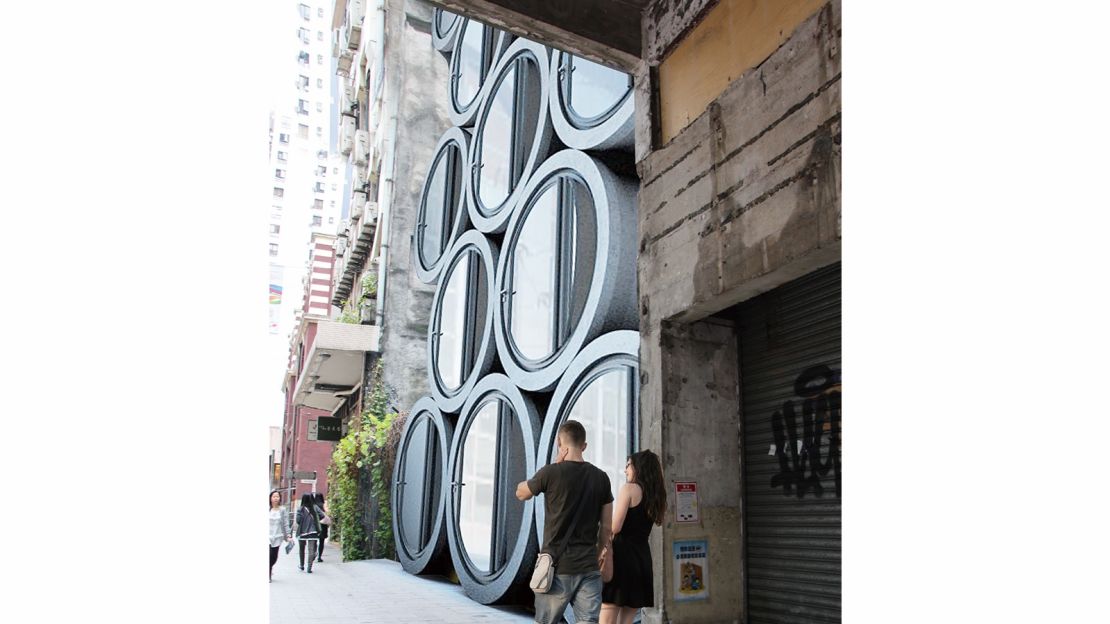Imagine life inside a concrete water pipe, complete with all the mod-cons of a cozy home and plenty of natural light to boot. This type of micro home is exactly what Hong Kong-based architectural firm James Law Cybertecture has invented.
The tube homes are 16 feet (5 meters) long, and have a 7-foot (2.1-meter) diameter on the inside. Covering between 100 and 120 square feet (9 to 11 square meters) of floorspace, they each feature a fold-out bed, a fridge and microwave, and a bathroom. Access to the structures is controlled by smartphones.
The OPod was unveiled in Hong Kong last month at the city’s DesignInspire exhibition.

“I came up with the idea behind the OPod when I was on a construction site,” says James Law, chairman and CEO of the firm. “I walked into one of them (a concrete water pipe), and I was surprised by how big they were.”
Law decided to create starter homes inside these structures.
“I thought: wouldn’t it be a really great idea to utilize these leftover concrete water tubes to create vast, micro architecture – that could be at very low cost, and also quite interesting for young people in Hong Kong?”
It took the firm one month to develop the idea.
“We need to live small in the city, because we can’t afford the space – however, it doesn’t mean that we have to live in a squalid, or inhuman environment like subdivided flats or cage homes.”
Low-cost housing
Law says the challenges presented by Hong Kong’s unaffordable housing market was one of the factors that drove him to design the OPod.
In Hong Kong, the average property price per square foot costs $1,592, as of December 2017. With space at a premium, “nano flats” are not uncommon in the city. In 2017, newly built apartments of 180 square feet (17 square meters) went on sale for between $203,400 and $211,100.
Then there are Hong Kong’s notorious cage homes: a small apartment sectioned into multiple tiny dwellings made of wooden planks and wire mesh.

The OPods cost $15,350 each to build, and Law says he was able to keep costs low thanks to the water pipes themselves being inexpensive. The transportable nature of these structures, and the fact the homes inside them are easy to assemble, were a bonus. “Each water pipe can be put on the back of a long truck by crane, and moved from place to place. They’re quite heavy – each pipe is about 20 tonnes – but it’s manageable.”
The pipes can be installed in small spaces between existing buildings, under flyovers and on rooftops in Hong Kong.
“We basically did it as a very bare shell,” he adds. “Even inside the tube, we’re using a concrete finish. It’s very, very low-cost.”
The homes were designed for two people, although might be more comfortable for one.
“Small is not really the issue,” says Law. “A well-designed small space can still be quite a hospitable, very warm, very cozy home.”
Each OPod would be rented out at a cost of $383 per month – primarily to the city’s youth, as a temporarily housing solution.
“Younger people need some kind of period in their lives in the city where they’ll be able to afford to live (while) building up their resources,” he explains. “They can rent it for six months, one year … and during that time they can build up their resources and get educated, and get training.”
Inside the 309-sqft transformer home
Better future
Law has bigger plans than simply helping young people find an affordable space to live. He wants the tube homes to be a kind of social housing project.
He envisions a system where means-tested tennants are selected. Then two-thirds of the rent is invested for the young tenants, and given back to them with interest after their tenure.
The architect says he’s already had interest locally and around the world from NGOs and youth hostels, as well as local governments and charities in South Africa considering the OPod as a redevelopment vehicle for shanty towns.

While the project doesn’t necessarily have to cater to the youth exclusively, ultimately Law hopes this will provide assistance to them.
“For me personally, as the creator of this project, my passion is somehow to help these young people, to nurture them, to protect them, to give them a decent step up in life.”












































